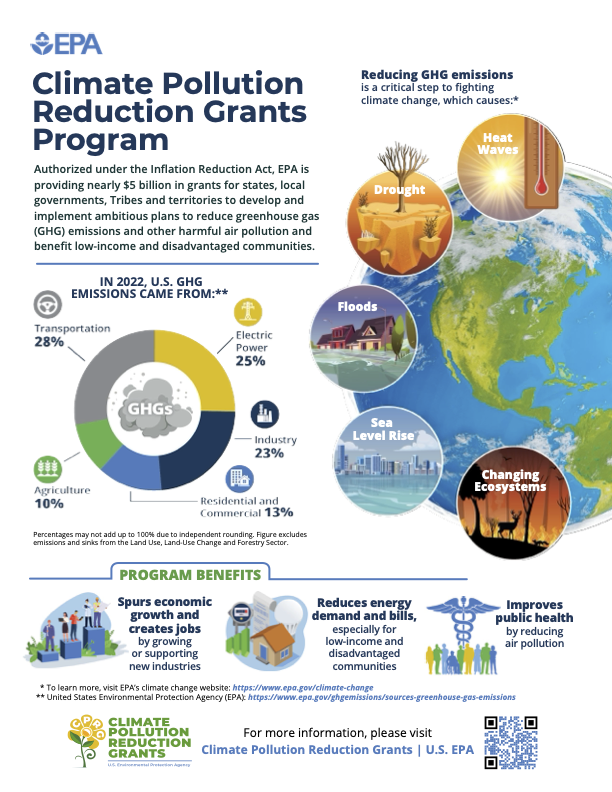CPRG Overview and Sector Infographics
Authorized under the Inflation Reduction Act, EPA is providing nearly $5 billion in grants for states, local governments, Tribes, and territories to develop and implement ambitious plans to reduce greenhouse gas (GHG) emissions and other harmful air pollution and benefit low-income and disadvantaged communities.
Reducing GHG emissions is a critical step to fighting climate change, which causes: heat waves, drought, floods, sea level rise and changing ecosystems.

View or download the above infographic in English CPRG Overview Infographic (pdf) or Spanish CPRG_Programa de subvenciones para la reducción de la contaminación climática (pdf)
2022 U.S. GHG Emissions by Sector
In 2022, U.S. GHG emissions came from:
Transportation – 28%
Electric Power – 25%
Industry – 23%
Residential and commercial buildings – 13%
Agriculture and natural and working lands – 10%
Waste and materials management – 2%
To learn more about GHG emissions by sector and the benefits to the public from reducing GHGs, please click on the sector link above to view each sector infographic.
Percentages may not add up to 100% due to independent rounding. Figure excludes emissions and sinks from the Land Use, Land-Use Change and Forestry Sector.
CPRG Program Benefits
- Spurs economic growth and creates jobs by growing or supporting new industries
- Reduces energy demand and bills, especially for low-income and disadvantaged communities
- Improves public health by reducing air pollution
About CPRG
Authorized under the Inflation Reduction Act, EPA’s Climate Pollution Reduction Grants program provides nearly $5 billion in grants for states, local governments, Tribes, and territories to develop and implement ambitious plans to reduce greenhouse gas emissions and other harmful air pollution and benefit low income and disadvantaged communities.
More Information
- Visit EPA's Climate Change site and Sources of Greenhouse Gas Emissions sites to learn more.
-
En español: Programa de Subvenciones para la Reducción de la Contaminación Climática
